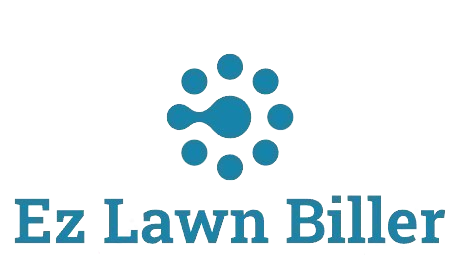Optimize Routes: Best Practices for Lawn Care Pros
Efficient routing is crucial for lawn care professionals aiming to enhance productivity and client satisfaction. This blog post dives deep into the best practices for optimizing routes, helping lawn care businesses save time and resources while providing top-notch service. We will explore strategies, tools, and technologies that can transform how lawn care companies manage their operations.
As a lawn care professional, your time is valuable. Whether you’re mowing lawns, fertilizing, or providing any other lawn care services, optimizing your routes can save you hours each week. This not only enhances your efficiency but also improves your bottom line. In today’s competitive market, effective route planning can set you apart from your competitors and lead to satisfied customers.
In this article, we will cover the importance of route optimization, key strategies to implement, tools that can assist in this process, and best practices to ensure your lawn care business runs smoothly and profitably. Let’s dig in!
Understanding the Importance of Route Optimization
Route optimization plays a pivotal role in the efficiency of any lawn care service. By streamlining your routes, you can minimize travel time, reduce fuel costs, and enhance the overall productivity of your team. According to industry studies, lawn care providers can save up to 30% in operational costs simply by optimizing their service routes.
For instance, consider a scenario where a lawn care company is scheduled to service multiple clients in a neighborhood. Without an optimized route, the team may travel back and forth, wasting time and fuel. In contrast, by planning the route logically, the team can service all clients in one go, improving efficiency and allowing for more jobs to be completed in a day.
Furthermore, route optimization significantly impacts customer satisfaction. Timely service delivery fosters trust and loyalty among clients. By being punctual and reliable, your lawn care business builds a positive reputation, leading to repeat business and referrals. Optimized routes ensure that you meet your clients’ expectations consistently.
Key Strategies for Route Optimization
Implementing effective route optimization strategies can dramatically improve your lawn care operations. Here are some key tactics to consider:
1. **Use Geographical Data**: Leverage mapping tools that provide geolocation data to understand your service areas better. Analyze the geographical layout of your clients to plan efficient routes. For instance, group clients located near each other to minimize travel time.
2. **Prioritize Jobs**: Not every job is created equal. Prioritize your appointments based on factors such as service type, time sensitivity, and client needs. This allows you to plan your day effectively and ensures that urgent jobs are completed promptly.
3. **Avoid Peak Traffic Hours**: Timing matters! Identify peak traffic hours in your service area and plan your routes to avoid heavy congestion. This can significantly reduce delays and keep your service on schedule.
Tools and Technologies for Optimizing Routes
In the digital age, there are numerous tools available to help lawn care professionals optimize their routes. Investing in the right technologies can enhance your operational efficiency and reduce manual work.
1. **Route Planning Software**: Consider investing in specialized route planning software designed for service companies. These tools can analyze various factors, including traffic patterns and job locations, to provide the most efficient routes. One such example is the integration of a reliable [lawn billing software](https://ezlawnbiller.com/) that not only manages billing but also assists in route optimization.
2. **Mobile Applications**: Using a lawn service app allows your team to access real-time route updates on the go. This flexibility enables your crew to adapt to any changes in their schedules quickly, ensuring they remain on track throughout the day.
3. **GPS Tracking**: Investing in GPS tracking systems can provide insights into your vehicles’ locations and movements. This data can be invaluable for understanding route efficiency and making necessary adjustments for future jobs.
Implementing Best Practices for Route Optimization
Incorporating established best practices into your routine can enhance the effectiveness of your route optimization efforts. Here are some recommendations:
1. **Regularly Review Your Routes**: Periodically review your service routes to identify areas for improvement. As client locations change or new clients are added, your routes may need to be adjusted to maintain efficiency.
2. **Train Your Team**: Ensure that your staff is trained in best routing practices. Educate them on the importance of following optimized routes and how to use related technologies effectively.
3. **Feedback Loop**: Create a system for collecting feedback from your team about the routing process. Encourage them to share any challenges they face and suggestions for improvement. This collaborative approach can lead to innovative solutions for route optimization.
Benefits of Route Optimization Beyond Cost Savings
While saving money is a significant benefit of route optimization, it is not the only advantage. Efficient routing leads to a host of additional benefits that can enhance your lawn care business.
1. **Increased Job Capacity**: By optimizing your routes, you can increase the number of jobs your team can handle in a day. This means more revenue without needing to expand your workforce.
2. **Reduced Environmental Impact**: Minimizing travel distances not only saves fuel but also reduces your carbon footprint. Clients increasingly prefer environmentally friendly businesses, making this an attractive feature of your services.
3. **Enhanced Employee Satisfaction**: Efficient routes can lead to a better work-life balance for your employees. By reducing unnecessary travel time, your team can complete their jobs faster and return home sooner. Happy employees are more productive and less likely to leave your company.
Case Studies: Successful Route Optimization in Lawn Care
To further illustrate the effectiveness of optimized routes in lawn care, let’s look at a couple of case studies.
**Case Study 1: Green Thumb Lawn Care**
Green Thumb Lawn Care implemented a route optimization strategy using advanced software. By analyzing their service areas and client locations, they restructured their daily routes. As a result, they reported a 25% reduction in fuel costs and an increase in job completions by 15% within just three months. The team also noticed a marked improvement in client satisfaction due to timely service.
**Case Study 2: Lawn Masters**
Lawn Masters, a small lawn care company, adopted a mobile lawn service app to streamline their operations. The app provided real-time updates on routes and client requests. Within six months, they not only improved their routing efficiency but also enhanced communication with clients, leading to a 40% increase in client retention rates.
Challenges in Route Optimization and Overcoming Them
While route optimization offers many benefits, it can present challenges as well. Acknowledging these challenges and having a plan to overcome them is essential for success.
1. **Data Management**: Managing client data effectively can be challenging. Ensure you have a robust system in place to keep your client information up to date. Using [service company software](https://ezlawnbiller.com/) can help manage this data efficiently.
2. **Adapting to Changes**: The lawn care industry can be unpredictable, with weather changes and last-minute client requests affecting your schedules. Flexibility in your routing plans is crucial. Encourage your team to be adaptable and use technology to adjust routes as needed.
3. **Cost of Implementation**: Investing in new technologies and training may have upfront costs. However, view these as long-term investments that will pay off through increased efficiency and profitability.
Conclusion
In conclusion, optimizing routes is a vital practice for lawn care professionals aiming to enhance efficiency, reduce costs, and improve customer satisfaction. By understanding the importance of route optimization, employing key strategies, utilizing effective tools, and embracing best practices, lawn care businesses can transform their operations.
The benefits of route optimization extend beyond just savings; they include increased job capacity, reduced environmental impact, and enhanced employee satisfaction. By learning from successful case studies and addressing challenges head-on, your lawn care business can thrive in a competitive market.
As you consider implementing these strategies, remember that the right [lawn service software](https://ezlawnbiller.com/) can be a game-changer. Optimize your routes today and watch your business grow. Don’t miss the opportunity to elevate your lawn care services and ensure your clients receive the best possible experience!




